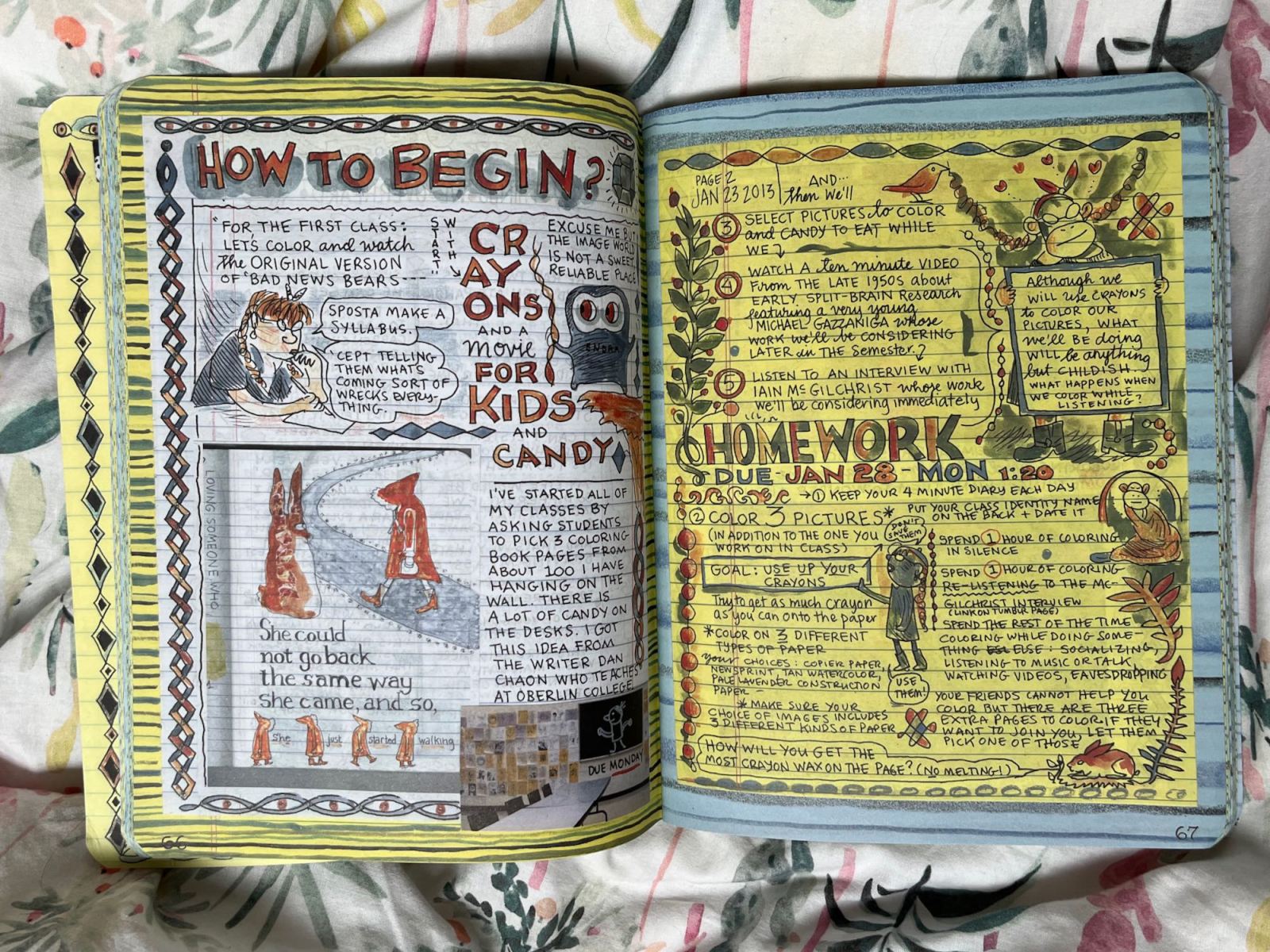I just finished reading Lynda Barry’s book Syllabus (Amazon), which documents the work she did through her creative arts course at University of Wisconsinin the 2010s and packages it up as a kind of self-serve course in comics/art/creative practice.
It’s a book with a highly unusual format.

It’s a loose assemblage of media and ideas. The pages are re-photographed lined yellow legal pads (paper thats designed to be thrown away; cheap and thin, not for recording your most valuable thoughts). She combines drawing (cartooning, doodling, exercises, colouring in) with collage; handwritten text with typed notes pasted onto the page; her own characters and responses to a brief with her students’ work, often redrawn or coloured in by Barry.
At first the narrative seems to be laid out in no comprehensible order. The argument doesn’t flow from A to B to C. The path is less direct. She plays delicately with ideas – often unformed – and lets the reader make connections and fill in the gaps.
My first thought was, this is the format I’ve been looking for. This is how my brain works, and often the things I make or write tend to take these loosely structured forms. A structured argument (like the one I’m writing right now) feels awkward and somehow overthinks things. But this is the first time I’ve seen this approach published to such good effect.
I wonder what is the digital equivalent? Blogs are too linear – a chronological list of articles. Search (across the whole web) allows for more fragmented ways into a topic, but is largely broken now for real content (most of the results are ads or SEO-spam). Hypertext is a useful technology that allows us to build up assemblies of discrete linked parts, and perhaps a blog dense with internal and external hyperlinks (put together by a human, rather than computer working to a business model) is the closest we have to a digital equivalent.
Maybe it’s unusual to see this kind of loose format published because it’s difficult to make it comprehensible to the reader. It’s writing first for the writer.
But as I read further, and got my eye in, I realised that it wasn’t quite as loose as it first appeared. There is a hidden structure that’s part of what makes it work. There are repeated patterns in the way topics are introduced and explored. There is a rhythm in the way she presents original curriculum notes intended for her students, collections of their work, and reflections on the process of teaching. There are few headings or chapters, and yet each new section feels – if not an inevitable progression – at least a plausible next step. Ideas are pre-figured on one page, and then often revisited a few pages later to be fleshed out. All of this helps to orient the reader.
An inspiring format for sure, and a solid recommend.
Incidentally, I just bought Barry’s follow up book, Making Comics, and the first thing I noticed is that she’s rounded off a lot of the rough edges. It feels more conventional (its perfect-bound instead of being one over-sized signature) and the pages are neater, the handwriting more careful. Given what she says in Syllabus about retaining the aliveness of naive art, I was surprised to see she had tidied things up for her next book. I wonder why?
Leave a comment